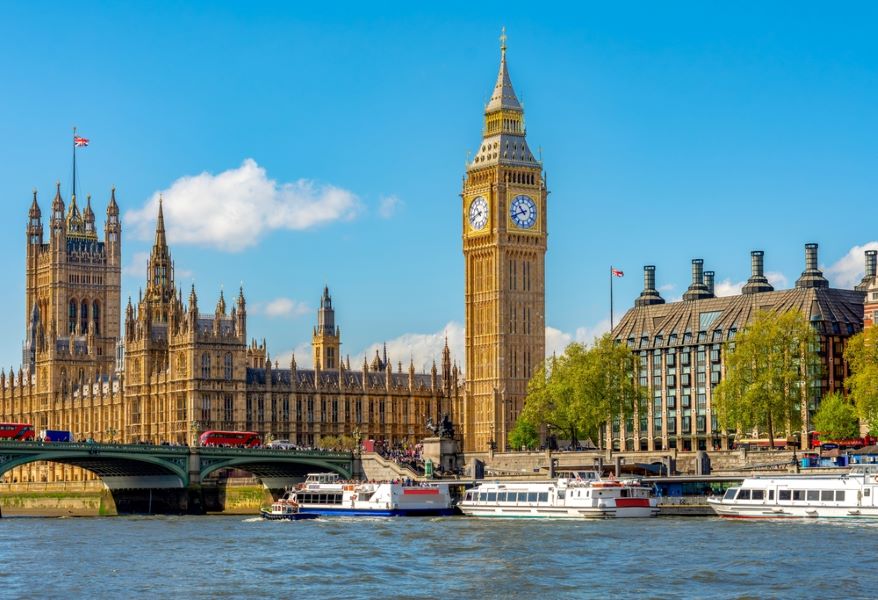Travel often brings the unexpected — hidden gems, fascinating history, and sometimes, a good dose of mischief. Throughout the years, some destinations have become the stage for elaborate hoaxes that fooled locals, confounded authorities, and even made headlines around the world. These pranks weren’t just innocent tricks; they were carefully planned spectacles that left a lasting mark on the places where they unfolded.
From media stunts to large-scale illusions, these hoaxes captured imaginations and, for a brief moment, made the impossible seem real. While the truth eventually came to light, the stories survived long past the initial deception. Today, these legendary pranks add an extra layer of curiosity to otherwise well-known destinations, reminding us that travel isn’t just about what we see, but also about the stories that shape a place’s history.
Join us on a journey to some of the world’s most unforgettable hoax sites — where history and humor collide in the most unexpected ways.

Mt. Edgecumbe, Sitka, Alaska
The Eruption of Mount Edgecumbe (1974) – Sitka, Alaska
On the morning of April 1, 1974, residents of Sitka, Alaska, awoke to an alarming sight—thick black smoke rising from the crater of Mount Edgecumbe, a long-dormant volcano on a nearby island. Panic spread as people feared an impending eruption. The Coast Guard quickly dispatched a helicopter to investigate, only to discover the true source of the smoke: a pile of burning tires and a giant message in the snow reading “April Fool.”
The mastermind behind this elaborate prank was local jokester Porky Bickar, who had spent years planning the stunt. With the help of friends, he flew a load of old tires, fuel, and smoke bombs into the crater, setting them ablaze just as Sitka residents started their day. While the prank initially caused widespread concern, relief soon turned to laughter as the truth emerged. Even officials, including Alaska’s governor, appreciated the humor in Bickar’s daring trick. Today, Mount Edgecumbe remains an inactive volcano, but it has earned a quirky place in history thanks to one of the most unforgettable April Fools’ Day pranks ever pulled.
The Sydney Iceberg (1978) – Sydney, Australia
Sydney Harbour has seen its fair share of stunning sights, but none quite as baffling as the iceberg that appeared on April 1, 1978. Locals stared in disbelief as a massive frozen formation floated into the harbor, reportedly towed all the way from Antarctica. The spectacle was the brainchild of Australian businessman and prankster Dick Smith, who claimed he had brought the iceberg as a solution to Sydney’s fresh water shortage.
Excitement spread as radio stations and news outlets covered the unusual arrival. However, the mystery quickly melted away — literally. A sudden rain shower washed off the “ice,” revealing its true construction: white plastic sheets and shaving cream cleverly layered over a barge. When the truth emerged, laughter replaced amazement, and the stunt became one of Australia’s most famous April Fools’ Day pranks.
Today, Dick Smith is still well known as an entrepreneur and adventurer, but his iceberg hoax remains one of his most legendary exploits. While real Antarctic icebergs never make it to Sydney, this convincing trick ensured that, for one day, the impossible seemed possible.

Walla Walla, Washington
The Spaghetti Tree Hoax (1957) – Ticino, Switzerland & U.K.
On April 1, 1957, British television viewers were treated to an unusual sight — a BBC program showing Swiss farmers harvesting spaghetti from trees. The segment, aired on the respected current affairs show Panorama, featured serene footage of workers in the Italian-speaking Ticino region of Switzerland, carefully plucking strands of pasta from tree branches and laying them in the sun to dry.
At the time, spaghetti was not a common household dish in Britain, and many people had little idea how it was made. The hoax was so convincing that countless viewers contacted the BBC, eager to learn how they could grow their own spaghetti trees at home. With a straight-faced response, the network advised them to “place a sprig of spaghetti in a tin of tomato sauce and hope for the best.”
The prank, masterminded by producer Richard Dimbleby, remains one of the most famous and successful April Fools’ jokes in history. While Ticino is a real region known for its food and culture, no spaghetti trees exist there — or anywhere. But for those who fell for the hoax, it was a reminder that even the most trusted sources can sometimes have a bit of fun.
The Leaning Tower of Pisa Falls (1950s) – Pisa, Italy
For centuries, the Leaning Tower of Pisa has defied gravity, standing at a precarious angle despite numerous efforts to stabilize it. But in the 1950s, a Dutch radio station shocked listeners with breaking news: the famous tower had finally collapsed. Panic spread as concerned citizens flooded the station with calls, desperate for more information about the supposed disaster.
Of course, it was all an elaborate April Fools’ prank. The report had been carefully crafted to sound credible, and with no internet or instant fact-checking, the news spread quickly before people realized they had been fooled. While the Leaning Tower visibly tilts, it remains standing to this day — thanks to years of careful engineering and preservation efforts.
This hoax is a great example of how a clever joke can exploit widely held fears. Even today, visitors to Pisa can’t help but wonder how much longer the tower will remain upright. Fortunately, it has outlived the prank by decades and continues to lean proudly as one of Italy’s most recognizable landmarks.

Scottsdale, Arizona
The Eiffel Tower’s Relocation (1986) – Paris, France
Paris is fiercely proud of its iconic Eiffel Tower, so it’s no surprise that an April Fools’ Day news report in 1986 caused widespread outrage. The French newspaper Le Parisien published a shocking article claiming that the Eiffel Tower was going to be dismantled and moved to Disneyland Paris, which was under construction at the time. In its place, a massive stadium for the 1992 Summer Olympics would be built.
Readers were stunned. The idea of relocating one of France’s most beloved landmarks to a theme park seemed unthinkable, yet the prank was convincing enough to spark heated debates. Some people were furious at the supposed decision, while others scrambled to verify the claim. When the truth came out, readers had a good laugh, though the joke highlighted just how much the Eiffel Tower means to Parisians and visitors alike. Standing tall over the city since 1889, the tower isn’t going anywhere.
‘Big Ben’ Goes Digital (1980) – London, England
Few landmarks are as closely tied to British identity as the clock tower at the Palace of Westminster, officially known as Elizabeth Tower, but popularly known as Big Ben. So when the BBC’s overseas service announced in 1980 that London‘s most famous clock face would be replaced with a modern digital display, the reaction was immediate — and overwhelmingly negative.
Listeners around the world were outraged by the supposed modernization of such a historic symbol. Some even called in to protest, insisting that the tower remain unchanged. To add an extra layer to the prank, the BBC jokingly claimed that the clock’s hands would be given away to lucky listeners who contacted the station first.
Once the hoax was revealed, responses ranged from amusement to exasperation. While the idea of a digital Elizabeth Tower seemed absurd, the prank worked so well because it tapped into fears of modernization erasing tradition. Over 40 years later, the famous clock still ticks away, proving that some icons are timeless — even in a digital age.
You Might Also Like: Get Your Chuckle on at These International Comedy Festivals

Racine, Wisconsin
Mock Alien Landing (1965) – Järfälla, Sweden
On April 1, 1965, residents of Järfälla, a suburb of Stockholm, Sweden, found themselves at the center of an eerie and unexpected event. A mysterious flying saucer had landed in a field, drawing curious onlookers who cautiously approached the strange craft. The shock turned to panic when an alien-like figure emerged, sending some people running in fear.
The entire spectacle was the work of Swedish prankster Gösta Karlsson, who had painstakingly built a realistic-looking UFO and placed it in the field as an elaborate April Fools’ joke. His dedication to detail, combined with the public’s fascination with extraterrestrial life, made the hoax incredibly convincing. Radio stations and newspapers quickly picked up the story, turning the event into a national sensation.
Once the truth came out, Karlsson’s prank went down in history as one of Sweden’s most memorable hoaxes. While no real aliens touched down in Järfälla that day, the prank proved just how easily people can be swept up in the excitement of the unknown.
FAQs:
Q: Can I visit all of these prank locations today?
A: Yes! All of the locations mentioned in the article are still accessible. Some, like the Eiffel Tower and Leaning Tower of Pisa, are major tourist attractions, while others, like Mount Edgecumbe and Järfälla, require a bit of extra travel.
Q: Is Mount Edgecumbe still an active volcano?
A: No, Mount Edgecumbe is considered dormant. However, in 2022, scientists detected underground activity, though no eruption is expected anytime soon.
Q: Does Sydney ever get real icebergs?
A: No, icebergs from Antarctica don’t reach Sydney Harbour. However, small icebergs can be seen much farther south, near the Antarctic coast.
Q: Where can I watch the BBC’s spaghetti tree hoax?
A: The original 1957 clip is available online. You can find it through the BBC’s archives or on video platforms like YouTube.
Q: How can I reach Mount Edgecumbe from Sitka?
A: Mount Edgecumbe is on Kruzof Island, accessible only by boat or floatplane from Sitka. Many visitors hike the volcano, which takes about 6-8 hours round trip.
Q: Was the Leaning Tower of Pisa ever in serious danger of collapse?
A: Yes, engineers stabilized it in the late 1990s and early 2000s. It’s now secure for at least 200 more years, though it still leans about four degrees.
Q: What is the best time to visit these locations?
A: It depends on the destination. Spring and summer are ideal for most places, but be mindful of weather conditions, especially for outdoor locations like Mount Edgecumbe.
Did we leave out your favorite epic April Fools’ Day prank? Tell us about it in the comments below!





Leave a Reply